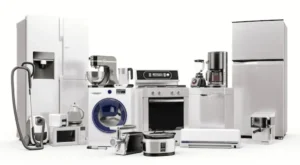When communicating professionally, finding the right words can make all the difference. A thoughtful and clear expression of ideas helps foster trust and understanding.
Whether you’re writing an email, giving a presentation, or discussing a topic with a colleague, being mindful of how you present both the positives and negatives of an idea can make your message more respectful and effective.
Below, we’ve gathered 30 professional alternatives to saying “pros and cons,” ensuring your message comes across with clarity and care.
What Does “Pros and Cons” Mean?
Meaning: “Pros and cons” refers to the positive and negative aspects of something, often used to weigh different sides of an issue or make decisions. The term highlights the advantages (pros) and disadvantages (cons) to be considered when evaluating options.
Explanation: It’s a common expression used to present a balanced view of a situation, allowing someone to make an informed decision based on both its benefits and drawbacks.
When to Use “Pros and Cons”
When to use: The term “pros and cons” is often used in decision-making contexts, discussions involving multiple viewpoints, or evaluating the merits of a plan or proposal. It helps to showcase both sides of an issue in a clear and concise manner.
Contextual Example:
- We should discuss the pros and cons of this new marketing strategy before moving forward.
Is It Professional/Polite to Say “Pros and Cons”?
Is it professional/polite? While saying “pros and cons” is not inherently unprofessional, it can sound somewhat casual in formal business contexts. Using more elevated alternatives can help convey the same meaning in a more polished or diplomatic way.
Pros and Cons Synonyms:
- Advantages and Disadvantages
- Strengths and Weaknesses
- Benefits and Drawbacks
- Positive and Negative Aspects
- Gains and Losses
- Positives and Negatives
- Opportunities and Challenges
- Favorable and Unfavorable Points
- Assets and Liabilities
- What’s in Favor and What’s Against
- Upsides and Downsides
- Prospects and Pitfalls
- Merits and Demerits
- Rewards and Risks
- Advantages and Disadvantages
- Benefits and Costs
- Pluses and Minuses
- Opportunities and Barriers
- Value and Risk
- Pleasantries and Pains
- Strengths and Limitations
- Bright Spots and Dark Sides
- Gains and Drawbacks
- Positives and Shortcomings
- Triumphs and Failures
- Merits and Shortfalls
- Benefits and Hurdles
- Winning Points and Weak Points
- Strengths and Trade-offs
- Favorable and Unfavorable Outcomes
1. Advantages and Disadvantages
Meaning: The benefits and drawbacks of a particular situation or decision.
Explanation: This is a direct, formal way to communicate the positive and negative aspects. It’s often used in business reports, presentations, or decision-making processes.
Scenario Example: “Let’s review the advantages and disadvantages of increasing the budget for the upcoming project.”
Tone: Formal, professional.
2. Strengths and Weaknesses
Meaning: Highlights the strong points (strengths) and areas that need improvement (weaknesses).
Explanation: This phrase is commonly used in performance reviews, project assessments, and discussions around business strategies or personal development.
Scenario Example: “We’ll assess the strengths and weaknesses of the proposal before moving forward.”
Tone: Constructive, analytical.
3. Benefits and Drawbacks
Meaning: The positive outcomes (benefits) and the negative factors (drawbacks) to consider.
Explanation: Similar to “pros and cons,” this is a more professional way to frame the conversation, often used in reports, contracts, or discussions that require a more objective tone.
Scenario Example: “Let’s look at the benefits and drawbacks of adopting this new technology.”
Tone: Objective, factual.
4. Positive and Negative Aspects
Meaning: The favorable (positive) and unfavorable (negative) sides of an idea or situation.
Explanation: This expression is clear and neutral, making it ideal for professional settings where a balanced perspective is required.
Scenario Example: “We’ll evaluate the positive and negative aspects of this merger before making a decision.”
Tone: Neutral, balanced.
5. Gains and Losses
Meaning: The advantages (gains) and the disadvantages (losses) of an option.
Explanation: Common in business and financial discussions, where the focus is on potential outcomes and impacts.
Scenario Example: “Let’s analyze the gains and losses of this acquisition proposal.”
Tone: Financial, strategic.
6. Positives and Negatives
Meaning: Similar to pros and cons, this refers to the good (positives) and bad (negatives) aspects.
Explanation: A straightforward, neutral way to discuss the advantages and disadvantages, useful in both casual and professional settings.
Scenario Example: “Before we make a final decision, let’s review the positives and negatives of the project.”
Tone: Neutral, straightforward.
7. Opportunities and Challenges
Meaning: The favorable situations (opportunities) and obstacles (challenges) one might face.
Explanation: This phrase emphasizes the potential for growth and development, often used in discussions about future plans or opportunities.
Scenario Example: “We need to consider both the opportunities and challenges of expanding into new markets.”
Tone: Positive, forward-looking.
8. Favorable and Unfavorable Points
Meaning: The favorable aspects are those in favor of a decision, while the unfavorable are the aspects against it.
Explanation: This expression maintains a formal tone and is often used in decision-making scenarios or evaluations.
Scenario Example: “Let’s review the favorable and unfavorable points of implementing this new process.”
Tone: Formal, clear.
9. Assets and Liabilities
Meaning: The valuable factors (assets) and the problematic ones (liabilities).
Explanation: Often used in financial discussions or business evaluations, where specific assets (resources, strengths) and liabilities (obligations, weaknesses) are being weighed.
Scenario Example: “We should assess the assets and liabilities of this investment opportunity.”
Tone: Financial, professional.
10. What’s in Favor and What’s Against
Meaning: The factors that support (in favor) or oppose (against) a decision.
Explanation: This phrase is more conversational yet still maintains a level of professionalism and balance when discussing different viewpoints.
Scenario Example: “Let’s discuss what’s in favor and what’s against this proposal before moving ahead.”
Tone: Casual, neutral.
11. Upsides and Downsides
Meaning: The benefits (upsides) and disadvantages (downsides) of something.
Explanation: A more casual, but still professional way to present both sides of an issue.
Scenario Example: “We should weigh the upsides and downsides of this partnership.”
Tone: Casual, conversational.
12. Prospects and Pitfalls
Meaning: The potential opportunities (prospects) and the potential difficulties (pitfalls).
Explanation: This phrase adds a bit more of a cautionary tone, as “pitfalls” can indicate potential risks or challenges.
Scenario Example: “We must consider the prospects and pitfalls of the new market expansion.”
Tone: Cautious, strategic.
13. Merits and Demerits
Meaning: The positive (merits) and negative (demerits) aspects of something.
Explanation: This phrase is more formal and is typically used when discussing the worth or value of something, such as a proposal or decision.
Scenario Example: “Let’s analyze the merits and demerits of this business proposal before we vote on it.”
Tone: Formal, evaluative.
14. Rewards and Risks
Meaning: The potential benefits (rewards) and the potential downsides (risks).
Explanation: Often used in decision-making related to investments, projects, or business ventures.
Scenario Example: “We need to weigh the rewards and risks of launching this new product.”
Tone: Strategic, professional.
15. Advantages and Disadvantages
Meaning: Highlights the positive and negative aspects of an idea, plan, or proposal.
Explanation: Clear and concise, ideal for formal or business communication, and commonly used in reports or meetings.
Scenario Example: “We will assess the advantages and disadvantages of each option in the upcoming meeting.”
Tone: Objective, formal.
16. Benefits and Costs
Meaning: This expression compares the positive aspects (benefits) and the expenditures or drawbacks (costs) involved in a decision.
Explanation: Commonly used in business, economics, and finance to weigh the overall value of an option by examining both its advantages and financial or resource-related drawbacks.
Scenario Example: “Let’s carefully evaluate the benefits and costs of the new software before we proceed with the purchase.”
Tone: Analytical, financial.
17. Pluses and Minuses
Meaning: The pluses are the favorable aspects, and the minuses are the negative aspects of something.
Explanation: This expression is more casual and colloquial but still professional enough for informal business settings or when you want a friendly tone while discussing both sides.
Scenario Example: “Let’s go over the pluses and minuses of this marketing campaign before we finalize our strategy.”
Tone: Casual, approachable.
18. Opportunities and Barriers
Meaning: This highlights the potential opportunities for success and the barriers or obstacles that might stand in the way.
Explanation: Often used in strategic planning, especially in business, when evaluating a market entry, project, or other initiatives.
Scenario Example: “We need to discuss both the opportunities and barriers to expanding into international markets.”
Tone: Strategic, forward-thinking.
19. Value and Risk
Meaning: This compares the value or benefit derived from something and the risks or potential negative outcomes.
Explanation: A term typically used in financial discussions, decision-making, and when considering investments or new ventures.
Scenario Example: “Before we make a decision, let’s evaluate the value and risk of this potential partnership.”
Tone: Risk-aware, strategic.
20. Pleasantries and Pains
Meaning: The pleasantries are the enjoyable or rewarding aspects, and the pains are the difficulties or challenges that may arise.
Explanation: A more casual and metaphorical way of framing the upsides and downsides of a situation, often used in less formal settings.
Scenario Example: “Let’s discuss the pleasantries and pains of this new project, and figure out how we can make it work.”
Tone: Casual, conversational.
21. Strengths and Limitations
Meaning: The strengths are the positive features, and the limitations are the restrictions or shortcomings.
Explanation: This phrase is often used in performance reviews, project evaluations, or analysis to balance what is working well with what might need improvement.
Scenario Example: “We’ll consider both the strengths and limitations of our current strategy and adjust accordingly.”
Tone: Constructive, evaluative.
22. Bright Spots and Dark Sides
Meaning: The bright spots refer to the positive or promising aspects, while the dark sides refer to the negatives or challenges.
Explanation: A slightly more creative way of expressing pros and cons, often used to convey a more colorful or evocative view of a situation.
Scenario Example: “We should discuss the bright spots and dark sides of this proposal before deciding.”
Tone: Reflective, metaphorical.
23. Gains and Drawbacks
Meaning: The gains are the positive outcomes or advantages, and the drawbacks are the disadvantages or unfavorable aspects.
Explanation: This is a straightforward way to analyze the potential benefits and challenges of any given decision or plan.
Scenario Example: “Let’s analyze the gains and drawbacks of shifting our focus to digital marketing.”
Tone: Objective, balanced.
24. Positives and Shortcomings
Meaning: The positives are the beneficial elements, and the shortcomings refer to the deficiencies or aspects that may not meet expectations.
Explanation: Used when addressing areas of both excellence and areas that need improvement, often in feedback sessions or performance assessments.
Scenario Example: “We should look at the positives and shortcomings of this new approach to see where improvements can be made.”
Tone: Constructive, evaluative.
25. Triumphs and Failures
Meaning: The triumphs represent the successes or achievements, while failures point to what did not work as expected.
Explanation: This phrase is used to summarize both achievements and missed opportunities, commonly used in performance evaluations or post-project assessments.
Scenario Example: “We should reflect on the triumphs and failures of the previous campaign to ensure better outcomes next time.”
Tone: Reflective, analytical.
26. Merits and Shortfalls
Meaning: The merits are the qualities that make something worthwhile or beneficial, and the shortfalls are the aspects that fall short or could be improved.
Explanation: Often used in evaluations, especially when comparing different options or discussing areas of improvement.
Scenario Example: “Let’s examine the merits and shortfalls of our current system and see where we can innovate.”
Tone: Constructive, objective.
27. Benefits and Hurdles
Meaning: The benefits refer to the positive aspects, and the hurdles are the challenges or obstacles that might impede progress.
Explanation: Frequently used when assessing a new venture, strategy, or initiative, emphasizing both the potential rewards and obstacles.
Scenario Example: “We need to identify the benefits and hurdles of this approach to ensure smooth implementation.”
Tone: Strategic, realistic.
28. Winning Points and Weak Points
Meaning: The winning points are the strengths or advantages, and the weak points are the areas that need attention or improvement.
Explanation: This phrase is commonly used to give an overview of both successful elements and weaknesses, often in presentations or evaluations.
Scenario Example: “Let’s analyze the winning points and weak points of this product launch before going live.”
Tone: Analytical, constructive.
29. Strengths and Trade-offs
Meaning: The strengths are the positive factors, and the trade-offs are the compromises or sacrifices made for the benefits.
Explanation: This phrase is useful in decision-making, where it’s important to weigh what you gain against what you might have to give up.
Scenario Example: “We need to balance the strengths and trade-offs of both solutions before making a decision.”
Tone: Strategic, thoughtful.
30. Favorable and Unfavorable Outcomes
Meaning: The favorable outcomes are the positive results or consequences, while the unfavorable outcomes are the negative results or potential issues.
Explanation: This expression is used when analyzing the potential consequences of a decision, helping to frame both the potential benefits and risks.
Scenario Example: “Let’s consider the favorable and unfavorable outcomes of this new product line before we proceed.”
Tone: Objective, analytical.
Conclusion
Using professional alternatives to “pros and cons” can elevate your communication by making your messages clearer, more thoughtful, and considerate. Whether you’re discussing a business proposal, evaluating a project, or giving feedback, these phrases offer the flexibility to communicate the positive and negative aspects in a more nuanced, professional, and respectful manner.
By choosing the right wording, you can foster open and productive conversations.
Recent Posts
30 Other Ways to Say “As Soon As Possible” Professionally (With Examples)
30 Other Ways to Say “Thank You for Your Attention” Professionally (With Examples)
30 Other Ways to Say “Enjoy Your Time Off” in an Email (With Examples)
30 Other Ways to Say “No Need to Apologize” Professionally (With Examples)
30 Other Ways to Say “Thank You, Too” Professionally (With Examples)

Daniel Jack is a passionate writer and founder of LexiQuester, a platform dedicated to unraveling the mysteries of words and language. With a love for storytelling and linguistic exploration, he crafts engaging content that inspires curiosity. When he’s not writing, Daniel enjoys diving into books and discovering hidden gems of knowledge.














